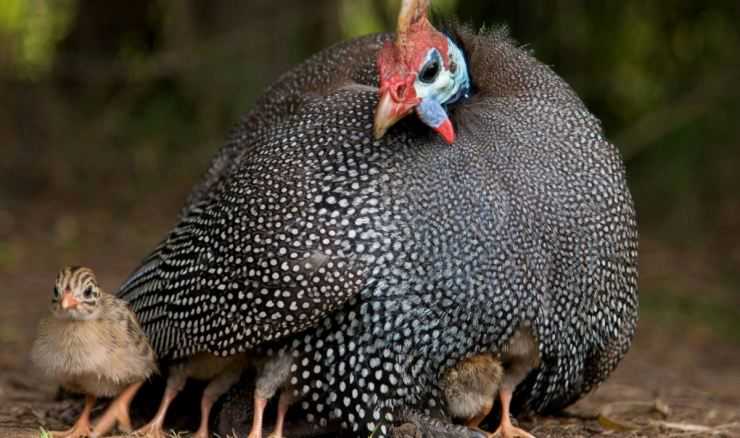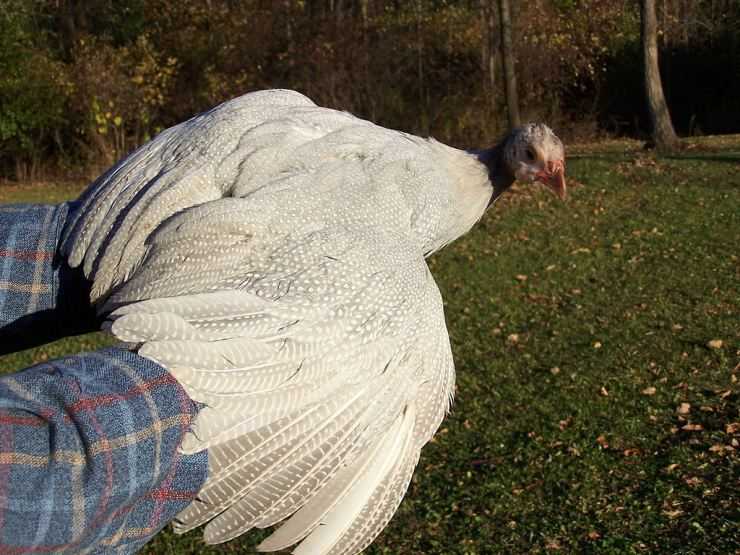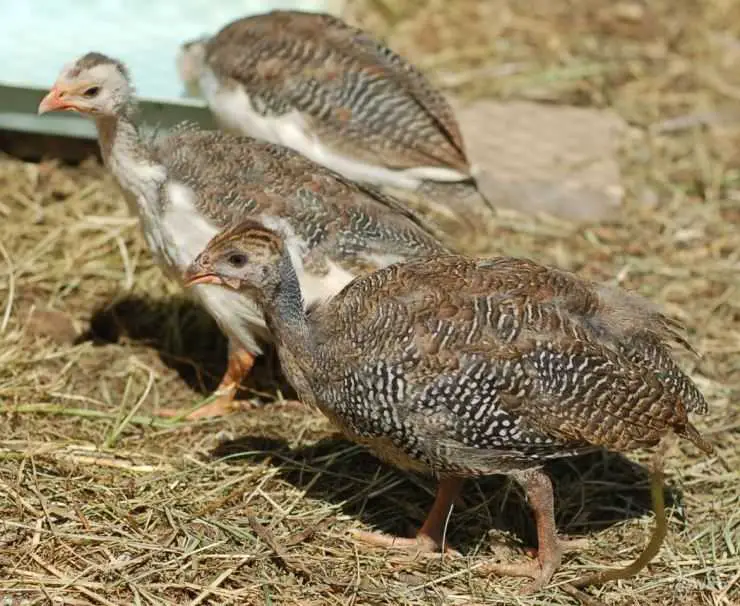Guineafowls are close relatives of domestic chickens, turkeys, and quails. Their homeland is North Africa, but they feel great in various regions of our country and Europe. Guineafowls were domesticated later than all farm birds, so they largely retained the habits of their wild ancestors. Birds live in a flock and fly well.
#1 In appearance, the “African chicken” looks more like a turkey.

As you can see in the photo, she has a large, almost horizontal body with a long neck and high legs. The plumage is dense, the color depends on the breed. The most common guinea fowls, close to the wild species, are speckled, dark gray in color, the size of a domestic chicken, and weighing about 1.5 kg. The long neck in the area of connection with the head is almost not feathered but covered with leathery growths. The cover in this area is bluish, and the head itself sometimes has a reddish collar.
#2 The beautiful name “guinea fowl”, as philologists say, comes from the word “Caesar”, that is, lord, patron, king

People associate it with the legend of the origin of birds. According to its Greek plot, the guinea fowl are the sisters of a certain Meleager, the son of King Oinei. As a result of the wrath of the gods, Meleager died, and his sisters turned into spotted birds. In the scientific world, guinea fowls became known in 1766, when they were first described by Carl Linnaeus under the name Numidameleagris.
#3 Who are guinea fowls and what kind of bird they are, in our country they have known since time immemorial

There is historical information that "overseas chickens" were presented to Ivan the Terrible as a gift. At his behest, mass breeding of this bird began to be practiced. Over the next hundreds of years, guinea fowls were raised in household plots along with turkeys and chickens.

